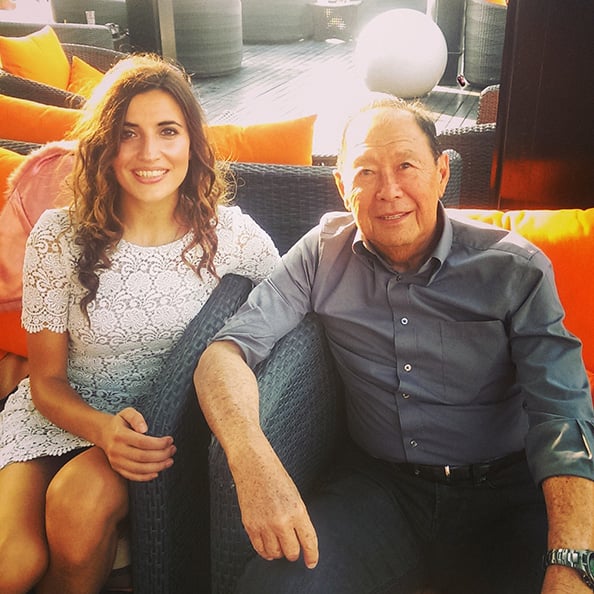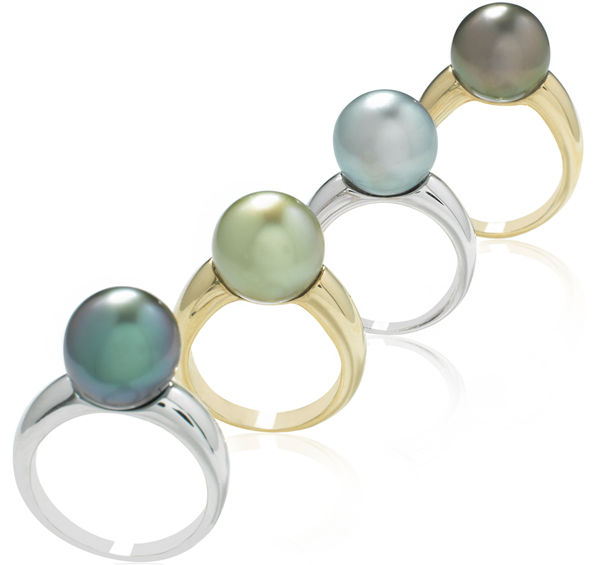According to folklore the pearl was born when a single drop of rain fell from the heavens and became the heart of the oyster – leading to the nickname ‘teardrops of the moon’. So what could be better for that extra special Valentine’s gift? But not any kind or pearl… a Robert Wan pearl….
Unlike diamonds, pearls don’t need to be polished – its lustre and shine is there the moment it leaves the oyster. No two pearls are the same, which further adds to their unique nature. The thing that makes Robert Wan stand above the competition, however, is geography. Apart from harvesting some of the best quality pearls from his farms in French Polynesian islands, he’s also benefits from being in the natural habitat of the pinctada margaritifera, or black-lipped oyster, which produces the amazing Tahitian black pearl.
Emirates Woman caught up with Robert Wan himself to talk about the gem, how to spot a fake, and how to choose the right one to reflect your personality…

Online Editor Alexandria Gouveia with Robert Wan
First thing’s first, how do you make a pearl?
The process is natural. First of all you have to have good material, a live oyster that’s good quality and in good health to produce a good quality of pearl. You have to handle the oysters very carefully. The oyster is an animal and the pearl comes from the animal – it’s the only gem produced from life.
Is it true no two are the same?
Absolutely. Never. Never. Just like us humans, we have different DNAs. You know it takes 20 to 24 months to make a pearl? It’s a very careful process. You will never know until the end exactly what it will look like.
How can you recognise if the gem is good quality?
You know the number one criteria for the quality is the lustre. Just like a diamond, it should instantly catch your eye.
What makes Robert Wan pearls so sought after?
Reputation. You can’t avoid it. People just love the black pearl we harvest. It’s just the best in the market… and we’re very fortunate to be in an ideal location to find it – right in the middle of South Pacific. You should see it, the seawater has no trace of pollution, which allows us to culture pearls of the highest quality while ensuring minimum disruption to the fragile ecosystem at each site.
How do you get a pearl black?
It depends on techniques used and the species of oyster – the black lip oyster. But it’s not all about the black oyster. We have cherry. We have peacock. We have so many colours.
What is the difference in the cost, between a white and a black pearl?
It’s big! The white pearl is natural. While the black ones are not easy to produce, or to cultivate because of the environment, and because the oyster is very difficult to find. We don’t use laboratory-like tanks. We have to create a natural environment for it.
How can you spot a fake pearl?
If you rub a pearl against your teeth and it feels plastic then it’s a fake. They’re also lighter, too.
What do you think of brands that use replica pearls in their costume jewellery?
It’s the fashion. I think it’s good for the pearl industry. If people like the fakes, perhaps they will come and buy the real thing.
Tell us about your new pearl bar at Bloomingdale’s Dubai…
It’s a new concept. The idea is educate the customer about pearls, to teach them where they come from, how they’re made and how they’re all unique. It’s great because we can determine the type of pearl that fits your personality by asking a series of questions. Then they can buy that pearl at the counter and customise it with bespoke bracelet.
What do you think about the pearl industry in the Middle East?
There’s a lot of knowledge here, of course, because of the UAE’s pearl diving history. It holds a lot of tradition and is really part of the culture. The Middle East is a popular market for Robert Wan.

Robert Wan has a selection of great collections for you to choose from this Valentine’s, including the Eternelles Rings, Toi et Moi and Forget me not. All Robert Wan collections are made with highest quality Tahitian Pearls ranging in a variety of different colours, from peacock to cherry.












